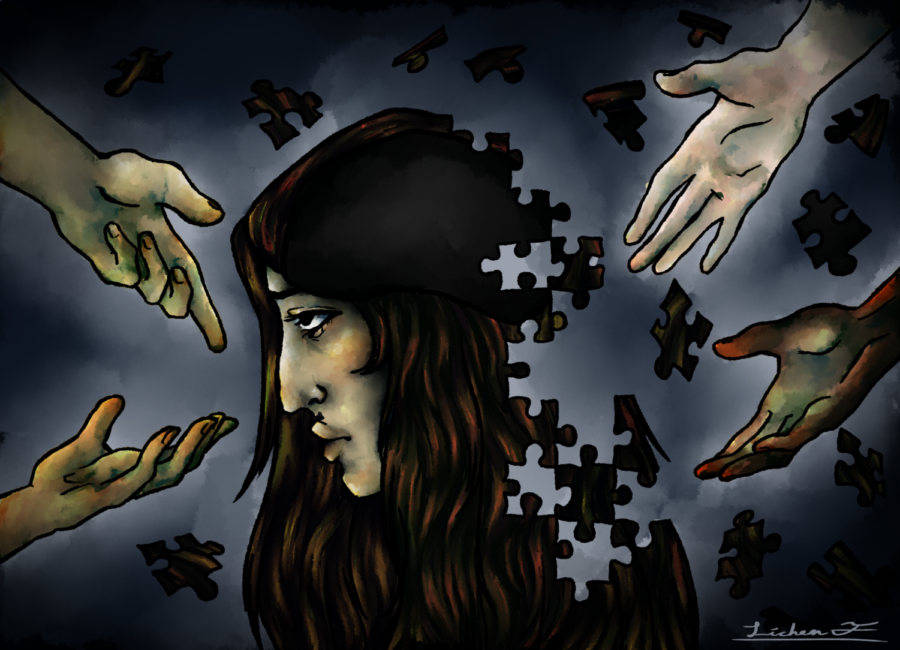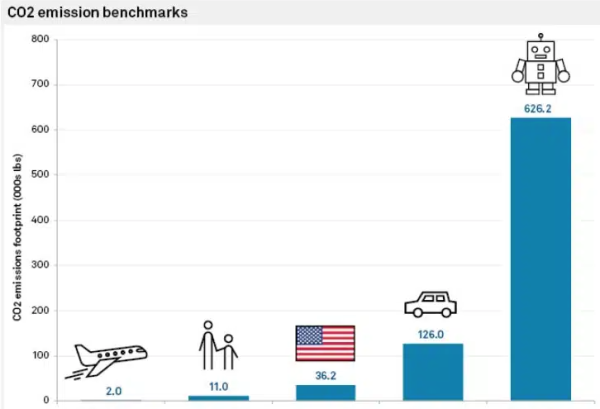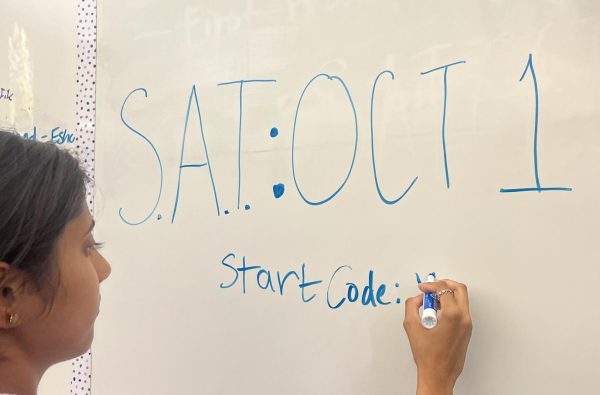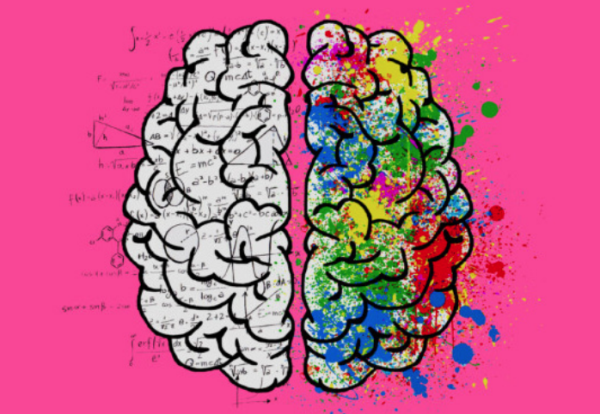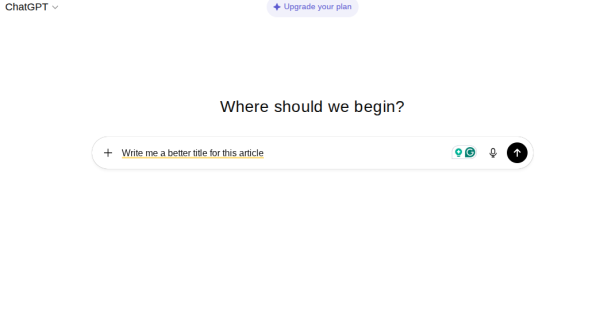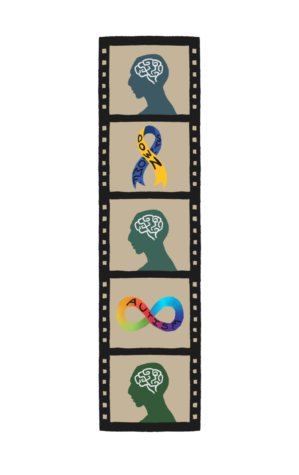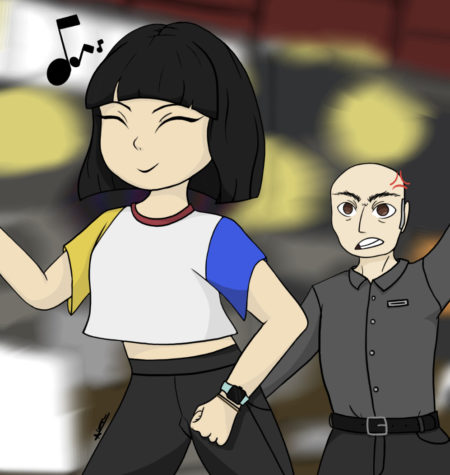More than a month-May’s identity crisis
photoillustration by Lichen Fisher
According to a June 13 CDC report, AANHPI youth were the least likely to receive mental health treatment, a trend paralleled by their parents.
May is having an identity crisis.
It has been designated as both Asian American and Native Hawaiian Pacific Islander (AANHPI) Heritage Month and Mental Health Awareness Month. Yet as an Asian American, representation of Mental Health Awareness Month is minimal in my life.
AANHPI community conversations during May are abundant in exchanges of jiaozi, lion dances and family reunions. However, candid discussions about mental health are rare—if not omitted. These conversations may not occur in AANHPI spaces, but the question is clear: does mental health really matter?
Rather, May can and must be a space for conversation and celebration. Communication must extend to discussions of mental health, especially bridging gaps in intergenerational communication that I and many other AANHPI youth experience. Both within and outside of the AANHPI community, the alarming rates of youth suicides go underrecognized. According to a 2017 CDC report, AANHPI youth are the only racial group where suicide is the leading cause of death for ages 15-19.
When I try to approach my mom about my mental health concerns, the exchange is cyclical.
“It only takes five minutes,” she’ll insist when I ask about therapy sessions. I wonder whether this cleaning process should really be a clearing process—not of the physical space of my room, but the personal space of my mind. I imagine myself in my mother’s memory—dust and depression gathering in the vacuum to be neatly removed.
When I first told my mom about my depression, she offered practical, action-based suggestions, almost like a to-do list to maximize physical health: clean my room, exercise more or sleep more.
It’s frustrating when she analogizes my depression to my dirty laundry—can I really achieve happiness in the fifteen minutes it takes to clean my room? I question why she can’t understand it’s not that easy to “fix” how I feel.
I imagine myself in my mother’s memory—dust and depression gathering in the vacuum to be neatly removed.
The barriers I experience are nothing new; their roots are generational. To understand the cultural and familial influences that have uniquely shaped both of my parents’ views on mental health requires historical analysis.
I am the monolingual product of two distinct cultures—six generations of Chinese on my dad’s side and Thai from my immigrant mom. In the English and fragmented Thai and Cantonese I speak, certain words are censored. The S word represents not only suicide but shame and stigma—my mental health issues are the face of my family whether I want them to be or not. In other words, AANHPI communities often attribute mental health struggles to poor parenting and physical health. When I first told my mom about my depression, she offered practical, action-based suggestions, almost like a to-do list to maximize physical health: clean my room, exercise more or sleep more.
Though her these suggestions are valid, they weren’t validating. Most of the time, people, especially youth, are looking for someone to listen and to let them come to their own conclusions in a supportive space.
What’s a mental health crisis to me is not to my mom.
Understanding the complex factors behind my parents’ response to my mental health was key. Yet understanding without application fails to achieve meaningful, systemic change.
Lack of accessibility is the largest challenge for AANHPI friendly mental health resources. As the American Psychiatric Association finds, AANHPIs are the “least likely to seek mental health services than any other racial/ethnic group.”
Current dialogue around AANHPI mental health is often conducted only after mental health concerns have compounded into crises—when the issue has become too big to ignore or has negative impacts on presentations of physical health.
Many existing support systems are inherently limited in the AANHPI audiences they can reach. The overwhelming majority of providers communicate in English, which presents challenges for nearly a third of AANHPI who are not proficient in English.
Yet accessible language goes beyond communication in mother tongues; it includes terminology that deescalates rather than exacerbates historic cultural stigma around mental health.
Mental health care providers must be cognizant of how vocabulary like “psychotherapist” can perpetuate negative associations and further distrust in the mental healthcare system among AANHPI families. On the other hand, language that validates Eastern medicine options in treatment, such as acupuncture or ayurveda, can increase comfort.
Moreover, providers must recognize the unspoken language many AANHPI carry—language that can include intergenerational trauma and internalization of racist myths like the “model minority.” If I, as an AANHPI youth, am struggling to communicate with my parents, there is more than language dividing us. While culturally competent resources and education should always be available, ultimately talks about AANHPI mental health must become more commonplace.
Now, I mentally mark my calendar for conversations; when I see my mom cleaning and I want to chat, I wait for the vacuum’s vroom to dull. I pick up my clothes and myself from the floor and speak.
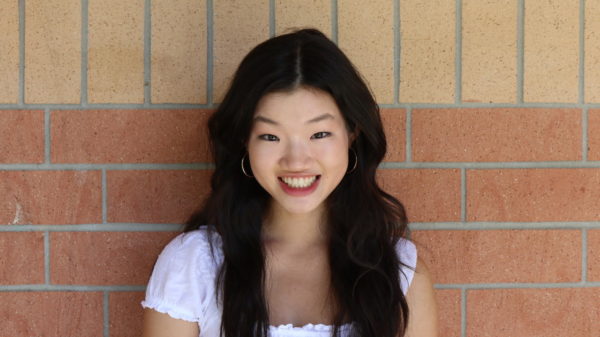
Sarah is a senior and Co-Editor-in-Chief. This is her fourth year on the Gazette staff.



